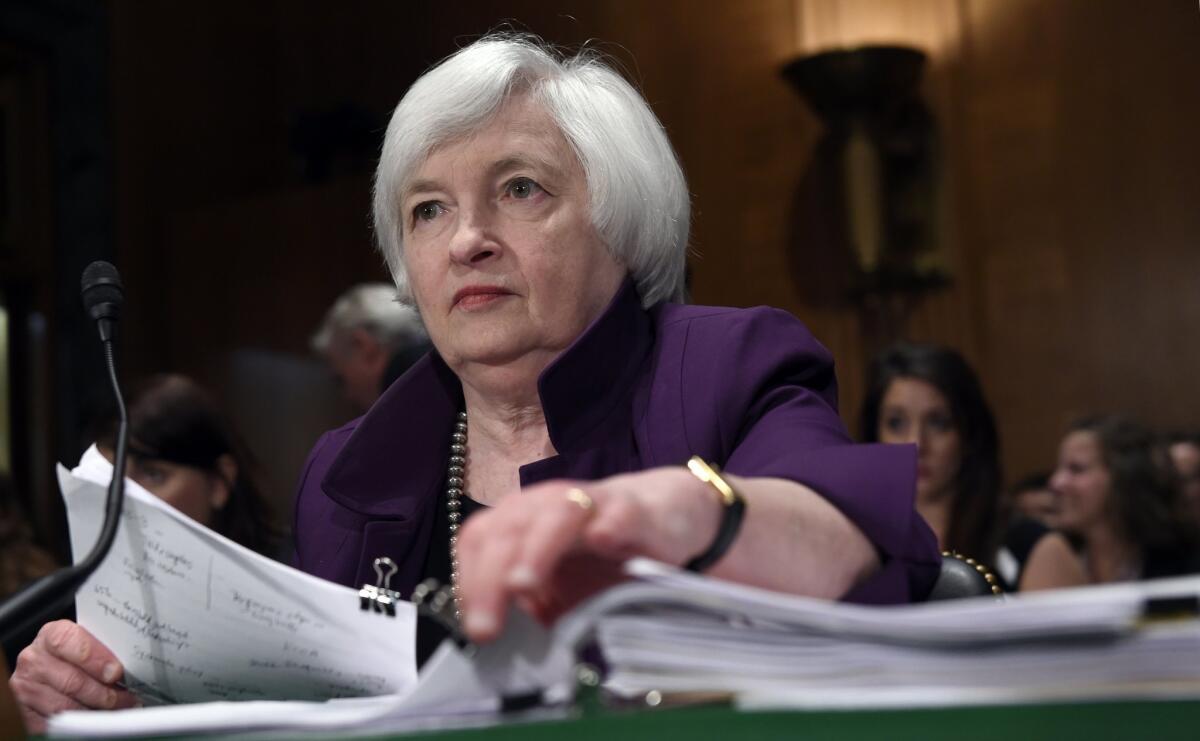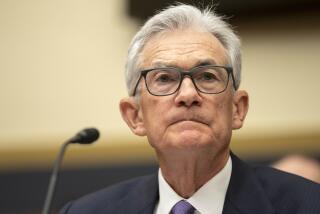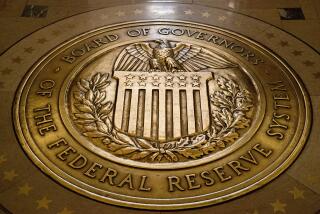Editorial: Why the Fed should raise interest rates now

Federal Reserve Chair Janet Yellen prepares to testify before the Senate Banking Committee on Capitol Hill in Washington.
The Federal Reserve helped pull the U.S. economy out of the deep recession of 2007-09 with its aggressive efforts to lower the cost of borrowing money. At some point, however, the Fed has to reverse course and push interest rates higher, or else it risks fueling inflation or inflating another asset bubble like the ones that led to the last two recessions. Unfortunately, there’s no flare that goes off to tell the Fed when we have reached that point, and history is littered with examples of when the board waited too long or not long enough to raise rates.
The Fed’s Open Market Committee is scheduled to meet this week in Washington, and it’s mulling whether to start nudging short-term interest rates back toward normal levels. There are good reasons to hold off and stick with the easy money policies that have been place since December 2008. But they are outweighed by the arguments in favor of carefully starting to tighten short-term interest rates now.
The central bank doesn’t control the economy, it just has a hand on one of the many levers that affect the pace of growth. Specifically, it takes steps to increase or decrease the amount of money in circulation to reduce unemployment while keeping inflation at a sustainably low level. Its monetary policy helps determine how easy (or hard) it is to obtain credit, which in turn influences how much businesses grow and invest and, by potentially lowering (or raising) the value of the dollar overseas, how much they export.
Congress’ decisions on taxes, spending and regulation can have a significant impact too. But after trying to kick the economy into higher gear in 2009 with more than $800 billion in emergency spending, lawmakers have been mainly riding the brakes, unable to agree on what the federal government should be doing to help the economy (or just about anything else).
The gridlock on Capitol Hill left the Fed to confront the sluggish economy alone, and former Fed Chairman Ben Bernanke deserves credit for pulling out all the stops. He lowered the target for short-term rates from 5.25% in August 2007 to 0% in less than 18 months, then launched three extraordinary efforts to encourage lending by purchasing trillions of dollars worth of bonds from banks.
The Fed started to wind down this “quantitative easing” a few months before Bernanke left office in early 2014, and his successor, Janet Yellen, completed that process. Yellen and her colleagues have also laid the groundwork for raising short-term interest rates by dropping hints regularly that the first upward step would come this year, most likely in September. That sort of hand-tipping helps reduce the chance that Wall Street traders will react wildly when the Fed ultimately announces an increase in the target rate.
Opponents of an increase argue that the time is not yet ripe. China’s frenetic growth is slowing, Europe remains sluggish and the Middle East is a basket case. Here at home, Congress is fumbling its way toward another government shutdown. More than 8 million adults remain stuck in part-time jobs or have dropped out of the workforce entirely. Besides, they say, there’s no need to raise rates because inflation remains well below the Fed’s target of 2% per year.
On the other hand, leaving interest rates at 0% punishes retirees who keep their money in bank accounts and Treasury bills. The low cost of borrowing can encourage businesses and investors to take on too much debt or put money into excessively risky ventures, while also promoting asset bubbles like the ones in dot-com companies in the 1990s and real estate in the 2000s.
Most important, as long as the Fed holds interest rates at 0%, it has few ways to respond effectively when another recession hits, which it inevitably will. By starting to move the target up now, the Fed will give itself room to maneuver in the future.
The signs point to an economy that’s on solid footing, with unemployment low and wages starting to rise in parts of the country. In fact, the U.S. economy has been growing, albeit bumpily, for more than four years in spite of seemingly incessant head winds, from the Greek debt crisis to the rise of Islamic State. If it’s not strong enough now to handle a return to normalcy in monetary policy, when will it be?
Follow the Opinion section on Twitter @latimesopinion and Facebook
More to Read
A cure for the common opinion
Get thought-provoking perspectives with our weekly newsletter.
You may occasionally receive promotional content from the Los Angeles Times.






